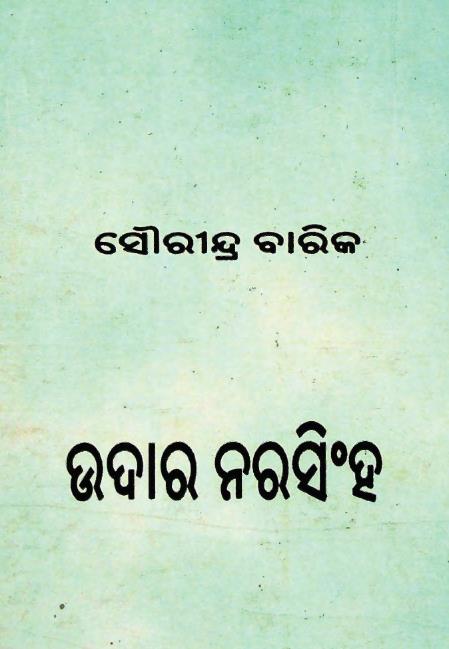In the realm of Odia literature, Saurindra Barik’s Udara Narasinha, published in 1996, stands out as a profound narrative highlighting the socio-cultural dynamics of Odisha. This essay not only encapsulates the essence of Barik’s storytelling but also delves into the broader implications of societal structures and relationships depicted in his work.
Udara Narasinha revolves around the story of a lion named Narasinha, who symbolizes strength, courage, and moral integrity. The narrative weaves together elements of folklore, local traditions, and the complexities of human society. Narasinha’s journey from the wild to interacting with human beings encapsulates the challenges faced by individuals in reconciling innate instincts with societal expectations.
Barik’s work is deeply etched in the rich tapestry of Odia culture. Through the character of Udara Narasinha, he explores themes such as justice, bravery, and the quest for identity. The lion becomes a metaphor for those marginalized individuals within society who strive for recognition and acceptance. As Narasinha confronts various adversities, Barik compels the reader to reflect on the nature of social justice and the importance of empathy in human relationships.
From a sociological standpoint, Udara Narasinha serves as a narrative lens through which we can analyze the prevailing societal norms and values of Odisha during the late 20th century. The story is replete with reflections on caste dynamics, economic disparities, and the struggle for personal dignity. Barik effectively portrays the conflicts that arise when individual aspirations challenge the status quo.
The character of Narasinha embodies the notion of resilience in the face of systemic oppression. As he navigates a world fraught with prejudice, he highlights the significance of solidarity among those marginalized by society. The interactions between Narasinha and the humans he encounters illustrate the complexities of social hierarchies and the often contentious nature of coexistence.
Moreover, Barik’s portrayal of community responses to Narasinha’s actions opens up discussions on collective responsibility. The societal inclination to ostracize or accept individuals based on their perceived value or capacity evokes a profound critique of human behavior and societal judgement.
In conclusion, Saurindra Barik’s Udara Narasinha is more than just a tale of a courageous lion; it is a mirror reflecting the socio-cultural intricacies of Odisha. Through this work, Barik not only entertains but also educates readers about the importance of understanding and challenging social injustices. His emphasis on empathy and community solidarity resonates deeply, urging individuals to rethink their roles within society.
The narrative stimulates a broader conversation about identity, morality, and the inherent worth of every individual, regardless of societal labels. As we revisit Udara Narasinha, we are reminded of the power of literature to transcend boundaries and instigate change, empowering readers to strive for a more just and inclusive society. As we navigate the complexities of our modern world, the timeless lessons embedded in this Odia essay remain relevant, inspiring a new generation toward compassion, courage, and collective action.
Books Info
| Books name | Udara Narasinha/ଉଦାର ନରସିଂହ |
| Author | Saurindra Barik |
| No Of pages | 212 |
| Publisher | Arjya Prakashaka |
| Publication | 1996 |
| Printed At | Sri Jagannatha Lamineter |
| Distributor | NA |

